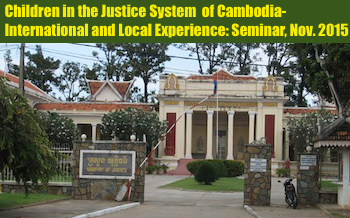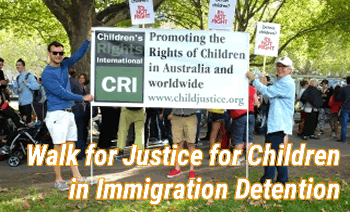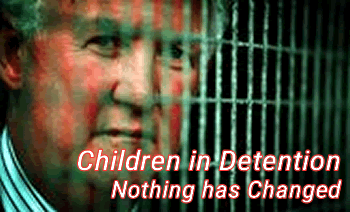Training on child protection for Vietnamese hospital staff
In December 2014, Children's Rights International (CRI) board member Professor Garry Warne AM travelled to Hanoi with Dr Anne Smith, Director of the Victorian Forensic Paediatric Medical Service (VFPMS) and her VFPMS colleague, Dr Andrea Smith. They were welcomed by the Director of the National Hospital of Pediatrics, Professor Le Thanh Hai and the 15-member child protection committee, which is chaired by Vice-Director, Dr Le Minh Huong and coordinated by Dr Do Minh Loan.
In a highly significant move, the Vietnamese Ministry of Health recently issued a circular instructing all hospitals to prepare protocols and procedures to deal more effectively with domestic violence, including violence against children. In addition, the government has passed a law that will see the creation of a new Family and Children’s Court. CRI Chairman, The Hon Alastair Nicholson AO RFD QC, has played a major role in supporting this development.
Dr Anne Smith and Dr Andrea Smith reviewed problems that have been encountered by the staff of NHP and provided some training on the types of injuries seen as a result of abuse. This project is on-going.
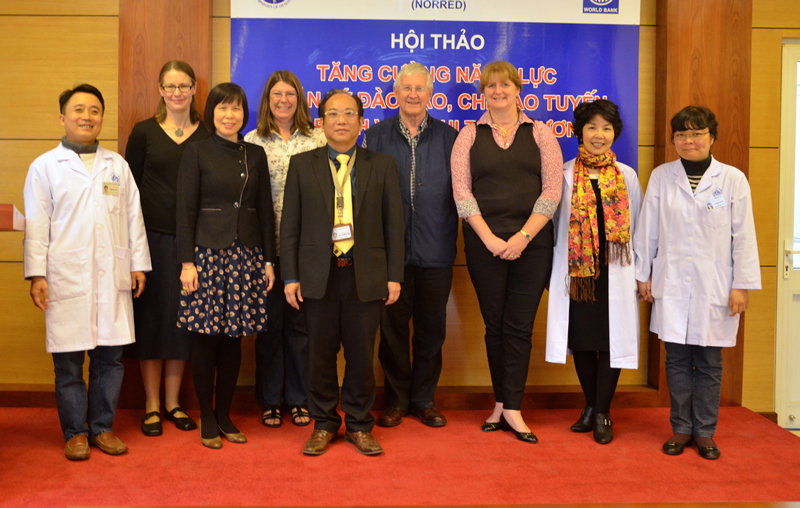
Read more: Training on child protection for Vietnamese hospital staff
Family and Juvenile Court established in Viet Nam
Children's Rights International (CRI) as extremely pleased to receive notification from UNICEF (Viet Nam) of the creation of Viet Nam's first dedicated children's court - the Family and Juvenile Court.
The Law on the Organiszation of the Supreme People's Court was passed by the National Assembly of Viet Nam on 24 November 2014 and subsequently promulgated by the President of Viet Nam. This law establishes the new Family and Juvenile Court.
UNICEF has been working for many years with the Vietnamese authorities to achieve this positive outcome. CRI was pleased to make its contribution and thanks UNICEF for their acknowledgement. We congratulate all involved in achieving this positive development for children and the justice system in Viet Nam.
'Stopping the boats' a fiction as Australia grows ever more isolationist on asylum
published in The Guardian, 31 December 2014
by Ben Doherty
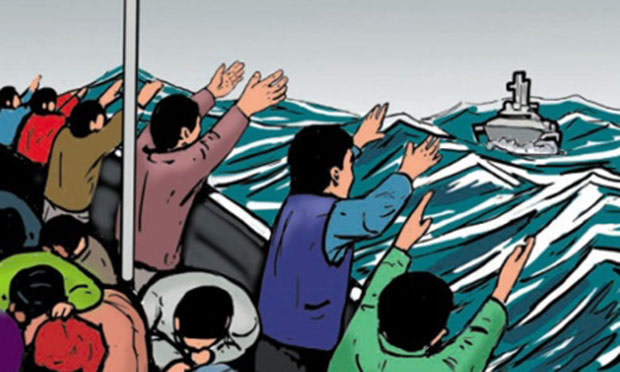
A comic produced by Australia aimed at deterring asylum seekers. Photograph: customs.gov.au
'Have the boats stopped reaching Australia?’ is the wrong question to ask. A better one by which to judge the success of its policies is this: are more people safer? Or fewer?'
The boats have not stopped. They have stopped reaching Australia but people are still drowning in seas in our region and across the world.
More than 350,000 asylum seekers boarded boats in 2014, the UN has found, leaving their homeland to seek protection somewhere else. Of those, 54,000 people boarded a boat in south-east Asia – Australia’s “neighbourhood”, in the words of the foreign minister.
At least 540 people died on boat journeys in that neighbourhood – starved, dehydrated or beaten to a death by a crew member and thrown overboard – or drowned when their unseaworthy vessel sank.
Read more: 'Stopping the boats' a fiction as Australia grows ever more isolationist on asylum
Australia's position on refugees is despicable
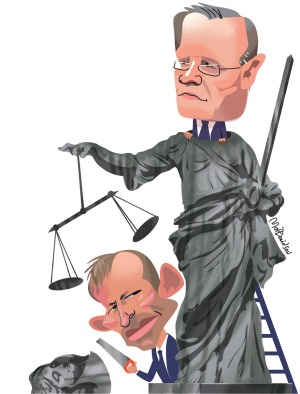 |
published in The Age, Comment, December 14, 2014
by Alastair Nicholson
It is time for all Australians to recognise that stopping the boats is not the answer to the refugee problem.
The issue of refugees is a global one deserving better than the shallow policies developed by successive Australian governments. History will not be any kinder to present Australians than to those of former eras in respect of their racist policies towards Aboriginal and Asian people.
Australian attitudes are curious since most of us, with the exception of the first Australians, are descended from refugees of one sort or another.
Unfortunately, most politicians think that stopping the boats resolves the matter.
The government's latest legislation makes superficial concessions that hide an outrageous scheme that shuts out the rule of law, confers worrying powers on the Immigration Minister, unilaterally amends the Refugee Convention and trashes Australia's former reputation as a good international citizen. Its passage was achieved by Scott Morrison using refugee children as hostages, offering a trivial increase in the number of humanitarian refugees accepted by Australia and making minor changes while leaving most asylum seekers in limbo with temporary protection visas or so-called safe haven visas.
At the end of 2013 an estimated 52 million people around the world were displaced, representing the greatest disruption of peoples since World War II. Overall, 50 percent of these refugees are children.
Immigration Minister has power to release all children from detention immediately, says former Chief Justice
The World Today with Eleanor Hall, Friday 28 November 2014, ABC News Radio, Australian Broadcasting Corporation
NICK GRIMM: Pressure is growing on the Immigration Minister Scott Morrison to release all children from immigration detention centres immediately.
In a rare foray into domestic politics overnight, the office of the United Nations High Commissioner for Refugees (UNHCR) in Jakarta criticised Australia's detention of child asylum seekers, describing it as harmful and a breach of international law and the UN Convention on the Rights of the Child.
It comes in a week when a group of prominent Australians launched a social media campaign urging an immediate end to the policy of detaining children.
But the Minister for Immigration and Border Protection says the number of children in detention has been reducing since the Government was elected and there are now almost 50 per cent fewer children across all immigration detention centres.
Further in a statement, the Minister says he will be able to get the remaining children out of detention in Australia when his migration and maritime powers bill, which is currently before the Parliament, is passed.
At the moment, there are more than 700 children in immigration detention facilities in Australia and offshore.
Now that figure appals the former chief justice of the Family Court of Australia, now the chairman of Children's Rights International, Alastair Nicholson.
Letter from Dr Robert G. Adler
Dear family, friends and colleagues,
As many of you know I recently spent a week on Christmas Island and a week on Nauru as a psychiatrist employed by IHMS to see asylum seekers in detention. I found the experience on Nauru particularly disturbing, prompting me to write the attached letter to the Prime Minister and the Leader of the Opposition.
See: Letter to the Prime Minister and the Leader of the Opposition.












